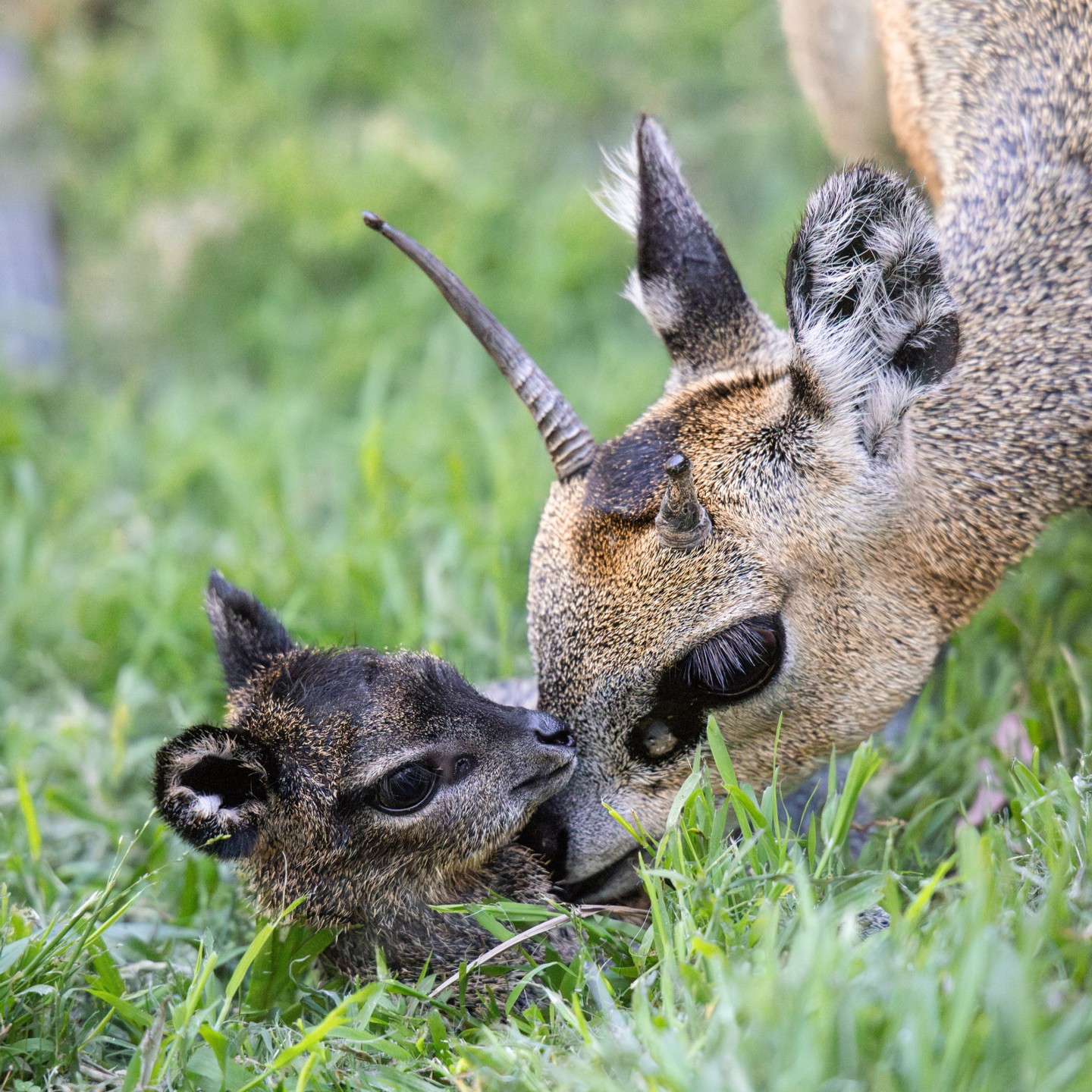- The birth of a klipspringer calf as a Mother’s Day present and its significance in zoo settings.
- The characteristics and behaviors of klipspringers in the wild and captivity.
- Methods and benefits of zoo management and conservation practices with klipspringers.
- The role of zoological parks in education and wildlife preservation.
- The importance of space and adaptation time for new animal mothers in zoos.
Zeelie, a klipspringer, just celebrated an unprecedented Mother’s Day gift with the birth of her first calf. This remarkable event is not only significant for the animal itself but also highlights essential aspects of zoo management and wildlife conservation. The newest addition to Zeelie’s family, a female calf, arrived weighing just under two pounds. This represents a critical moment in the broader context of species preservation and education.
Klipspringers, known for their sure-footedness and resilience, are small antelopes native to rocky terrains across eastern and southern Africa. Their sturdy bodies are adept at navigating steep and rugged environments, making them fascinating subjects of study both in the wild and within zoological institutions. In their natural habitats, klipspringers play pivotal roles in local ecosystems. They feed on a variety of vegetation, contributing to plant dispersion and ecological balance.
In captivity, animals like Zeelie provide researchers and caretakers with unique opportunities to study behaviors and health dynamics in controlled environments. This setting also allows conservationists to strategize breeding and preservation efforts for species at risk. Genuine understanding and preservation of such species require careful observation and significant expertise—a mission that accredited zoos take seriously.
Zoo management is integral to the success of breeding programs and the sustainability of rare species. Providing a safe environment for acclimation and adaptation is crucial after new births. In Zeelie’s case, keeping the lower viewing area of the Hillside Aviary closed for a period allows mother and calf to bond and adjust to their new surroundings without undue stress. These practices highlight the commitment to maintaining animal welfare and promoting natural behaviors in controlled settings.
Zoological parks, beyond being venues of entertainment, serve as essential educational platforms. They bridge the gap between humans and wildlife, fostering awareness and empathy toward species whose habitats face increasing risks. Zeelie’s story and the arrival of her calf offer visitors insights into the delicate processes of nature and the profound impact of conservation.
Imparting awareness through exhibits and interactive sessions where visitors learn about the klipspringer’s life helps forge connections. Such endeavors empower individuals, enriching public understanding of the natural world and promoting a sustainable future.
In wildlife conservation, the birth of a calf to a first-time mother like Zeelie brings hope. It exemplifies ongoing efforts by zoos to contribute positively to population numbers and genetic diversity. Modern zoos work diligently to employ research-backed strategies to ensure the successful rearing of young and the survival of species facing ecological threats. These institutions are equipped to handle the complexities of animal care, aiming to stabilize and grow populations in human care, contributing directly to the global efforts of wildlife conservation.
The thrilling news of Zeelie’s calf will be shared extensively, encouraging conversations around the vital role zoos play. As humans, we possess the unique ability to protect these creatures and ensure they continue to thrive both in wildlife preserves and zoo environments.
In summary, the arrival of a klipspringer calf on Mother’s Day serves as a poignant reminder of the importance of conservation efforts. It illustrates the extensive work that goes into wildlife management and the profound impact collaborative conservation can have on vulnerable species across the globe. Through careful management and education, zoos play a pivotal role in nurturing the next generation of species, ensuring their legacy endures.
*****
Source Description
How’s this for a Mother’s Day present: Zeelie klipspringer just became a first-time mommy!
The brand-new female calf is strong and bold (just like her mom) and weighed just under 2 pounds at birth.
We’re giving the klipspringers some time and space to get settled, so the lower viewing area of the Hillside Aviary will be closed off for a little while.
Happy (first) Mother’s Day to Zeelie and family, and to mothers of all species out there…today is your day ❤️
📸: Keeper Aeriell


